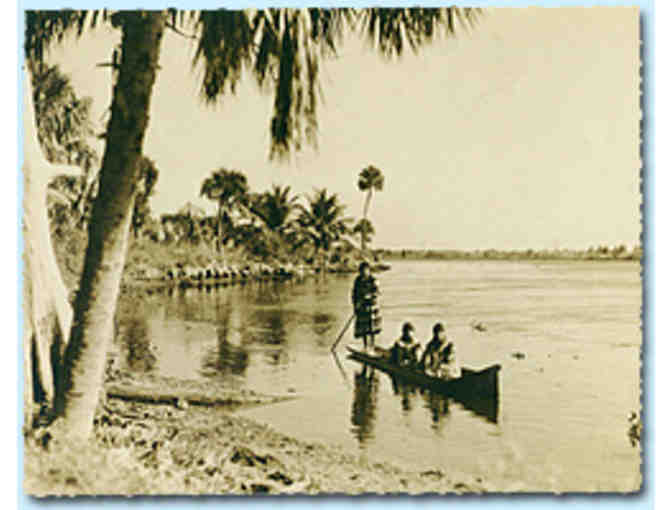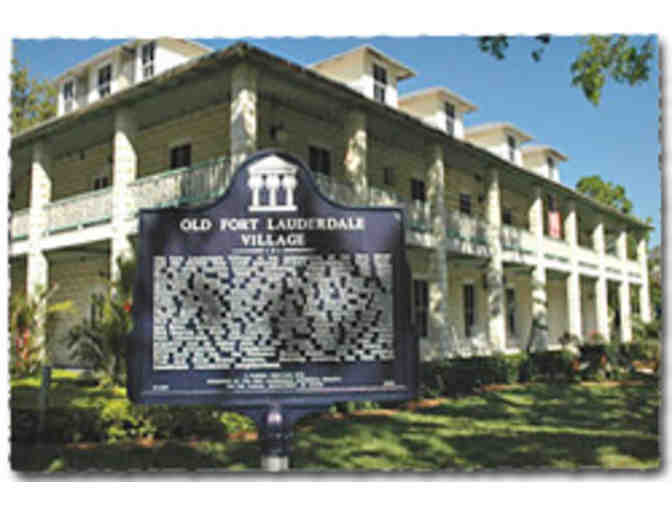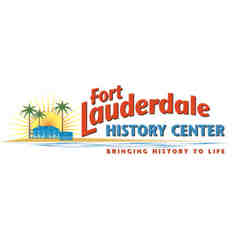Attractions
Fort Lauderdale History Center - One Annual Family Membership
- Item Number
- 133
- Estimated Value
- 75 USD
- Opening Bid
- 25 USD
Item Description
One Annual Family Membership - Good for up to six (6) family members!
The city of Fort Lauderdale is named for a fortification built during the Second Seminole War on the banks of the New River. In 1838 Major William Lauderdale led a detachment of Tennessee Volunteers south along the east coast of Florida to capture Seminole agricultural lands and battle the elusive Indian warriors. Altogether, three Forts Lauderdale would be constructed: the first at the fork of the New River; the second at Tarpon Bend; and the third and largest on the beach, at the site of today’s Bahia Mar.
After the Second Seminole War ended, southeastern Florida remained a virtual wilderness due to the lack of transportation into the region. In 1892, however, the Dade County government authorized the construction of a rock road between Lantana (in Palm Beach County) and Lemon City (now North Miami). An overnight camp and ferry crossing was established at the New River, and Ohio native Frank Stranahan arrived to take charge of the facilities. He established a flourishing trading post with the local Seminoles, and by 1895 Stranahan’s Trading Post was a south Florida landmark.
In 1896 the Florida East Coast Railway reached southward to Fort Lauderdale, providing rapid transportation to south Florida from all parts of the nation. The little village increased in size and was incorporated in 1911 as the City of Fort Lauderdale. In 1915 Broward County was created out of parts of Dade and Palm Beach counties.
Item Special Note
Family Membership Includes:
- Free entrance to the museum
- Free entrance to special exhibit opening receptions and programming events
- 10% discount at their Museum Store
- Subscription to their quarterly newsletter, The New River Inn-Sider
- Acknowledgement in their quarterly newsletter
- Four Free Museum Guest Passes
Donated By:
Seminole Ridge High School stores data...
Your support matters, so Seminole Ridge High School would like to use your information to keep in touch about things that may matter to you. If you choose to hear from Seminole Ridge High School, we may contact you in the future about our ongoing efforts.
Your privacy is important to us, so Seminole Ridge High School will keep your personal data secure and Seminole Ridge High School will not use it for marketing communications which you have not agreed to receive. At any time, you may withdraw consent by emailing Privacy@frontstream.com or by contacting our Privacy Officer. Please see our Privacy Policy found here PrivacyPolicy.



